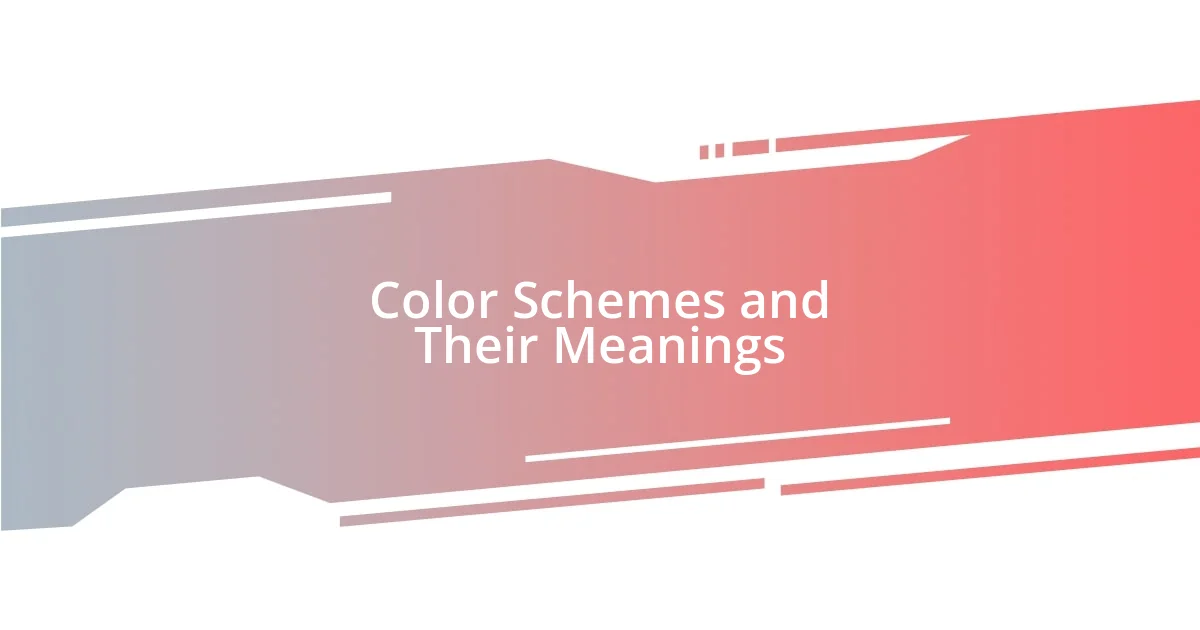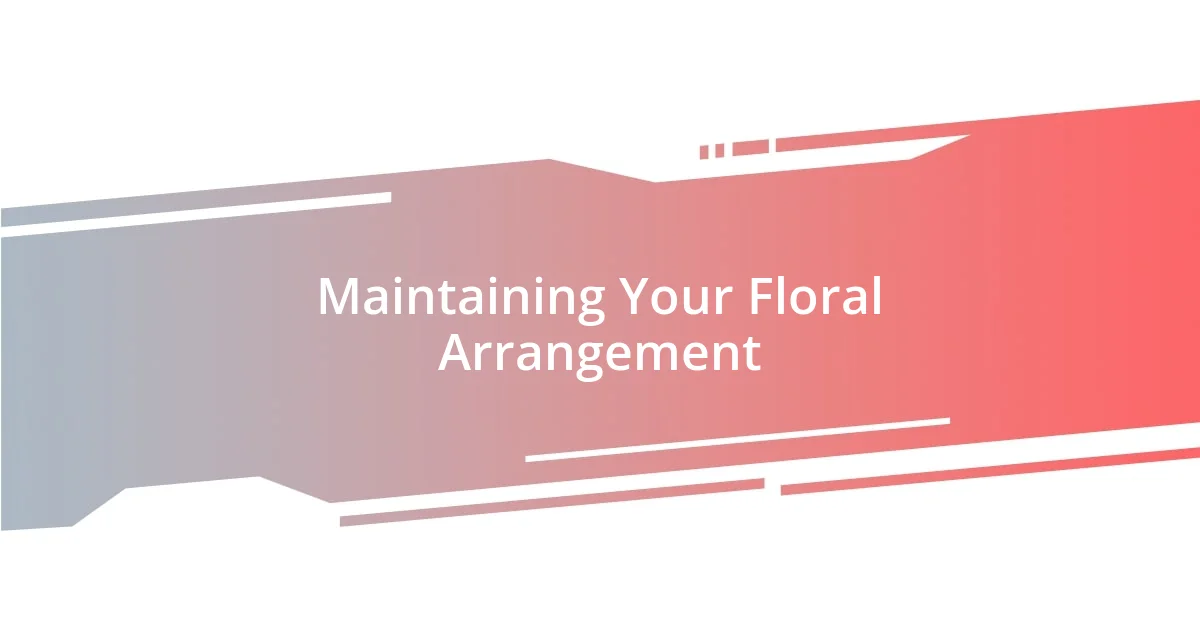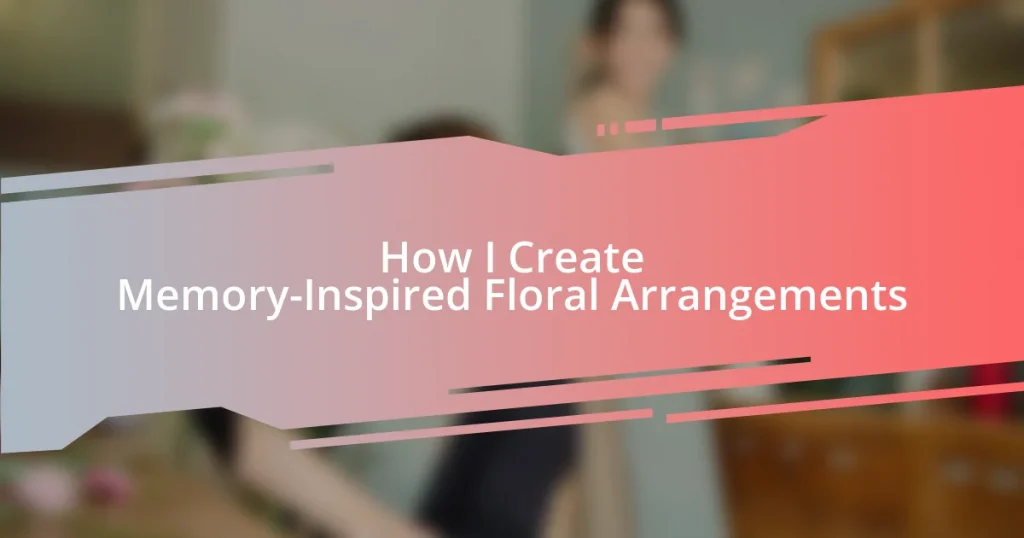Key takeaways:
- Memory-inspired floral design connects emotions with specific flowers, making each arrangement a personal storytelling medium.
- Choosing the right flowers based on emotional symbolism, such as joy with sunflowers or nostalgia with lilacs, transforms bouquets into cherished keepsakes.
- Key techniques like layering, height variation, and thoughtful presentation enhance the visual and emotional impact of floral arrangements.

Understanding Memory-Inspired Design
Memory-inspired design is all about tapping into emotions and experiences that flowers can evoke. I often find myself reaching for specific blooms that remind me of joyous moments or heartfelt occasions. For instance, when I create an arrangement in honor of a loved one, the choice of blossoms becomes a deeply personal journey, with each flower representing unique memories we shared.
It fascinates me how certain scents or colors can instantly transport us back in time. I remember once making a floral piece for a wedding anniversary—using white roses reminiscent of my own wedding day. As I arranged those flowers, I felt overwhelmed by nostalgia and love, which added a layer of meaning to my work.
Have you ever considered how a particular flower might symbolize a cherished memory for you? When I look at peonies, I can’t help but think of summer evenings spent with family in our garden. By infusing memory into my designs, I strive to create arrangements that resonate on a personal level, turning each bouquet into a storytelling medium that honors the past while celebrating the present.

Choosing the Right Flowers
Choosing the right flowers is crucial in crafting a memory-inspired arrangement. I’ve often found that certain blooms evoke specific feelings based on my personal experiences. For example, when I select sunflowers, I’m reminded of family road trips during childhood, where we’d pass fields full of vibrant yellow blooms. The cheerful nature of sunflowers can instantly lift spirits, making them a perfect choice for celebrations.
When considering color and meaning, I think about how some flowers symbolize different emotions. The deep red of tulips speaks to love and passion for me, while purple lilacs remind me of my grandmother’s garden filled with her laughter. I always encourage others to reflect on their own experiences with flowers—what does each bloom make you feel? Connecting these emotions to our arrangements can transform a simple bouquet into a cherished keepsake.
To make the process easier, I’ve created a comparison table showcasing flowers based on their emotional symbolism and specific occasions. This can help you select blooms that resonate with your memories.
| Flower | Symbolism |
|---|---|
| Sunflower | Joy & Happiness |
| Tulip | Love & Passion |
| Lilac | Nostalgia & Innocence |
| Rose | Romance & Devotion |

Incorporating Personal Memories
Incorporating personal memories into floral arrangements is a beautiful process that allows me to connect deeply with each design. For instance, I once crafted a breathtaking bouquet of lilacs for a dear friend’s birthday. As I layered those fragrant blooms, I felt the warmth of summers spent at my grandmother’s house, surrounded by laughter and love, reminding me how powerful these floral connections can be.
Here are some ways to incorporate your personal memories into floral designs:
– Reflect on significant life events—weddings, anniversaries, or births—considering which flowers were present.
– Choose blooms that remind you of a loved one and their favorite flowers.
– Think about places that hold meaning for you, like a childhood garden or a special vacation spot, and select flowers from those settings.
– Use colors and scents that spark joy or nostalgia, helping you relive those cherished moments.
– Create a seasonal bouquet based on memories tied to specific times of the year, like vibrant autumn leaves or blooming spring flowers.
By weaving these memories into my arrangements, I strive to create a floral experience that speaks to the heart, inviting others to reminisce alongside me.

Color Schemes and Their Meanings
Color significantly influences the emotions evoked by floral arrangements. I remember once creating a bouquet with warm hues of orange and yellow for a friend’s graduation. The vibrant colors not only symbolized achievement but also radiated a sense of optimism, transforming the event into a joyful celebration. Isn’t it interesting how a color can set the tone for an entire occasion?
When delving into the psychology of colors, it’s vital to consider their meanings. For instance, blue flowers, like delphiniums, can bring a sense of calm and peace. I often use them in arrangements for moments of reflection or sympathy, drawing on how their serene presence can ease the heart. Have you ever noticed how the mere sight of a color can shift your mood?
Combining colors can create unique emotional narratives in your floral designs. I once experimented with contrasting colors—vibrant reds against soft pinks. This combination represented a profound journey of love, encompassing both passion and tenderness, and it evoked memories of my own romantic milestones. It’s fascinating how layering colors can add depth, making every arrangement more personal and relatable.

Arranging Techniques for Impact
When it comes to arranging flowers, I’ve found that the placement of each bloom can dramatically enhance the overall impact. For instance, I once created a centerpiece by clustering delicate white roses at the center and surrounding them with deep purple calla lilies. This design not only drew the eye but also conveyed a sense of elegance that echoed a sophisticated evening I once attended. Have you ever thought about how the arrangement can change the way we perceive each flower?
Layering is another technique that never fails to create a dynamic experience. I remember blending textured greenery with bold peonies, which brought my arrangement to life. The lush leaves added depth, making the peonies stand out even more vividly. This got me thinking—how can we use variations in texture to evoke a more tactile memory for those who view our creations?
I often incorporate varying heights in my floral designs, as this can create a sense of movement and flow. Once, for a wedding, I used tall, slender gladiolus alongside low, sprawling daisies. The height difference not only provided visual interest but also mirrored the couple’s journey—one of reaching for dreams while remaining grounded in love. Have you noticed how such contrasts can tell a story, helping to connect emotions with visual aesthetics?

Finishing Touches and Presentation
After finalizing the arrangement, I pay close attention to the finishing touches, which can elevate the entire display. I’ve learned that a splash of texture—perhaps some twine or a delicate ribbon—can transform a simple vase into a statement piece. For instance, at a family gathering, I wrapped a rustic jute around a glass container; the contrast of the natural material with the vibrant blooms created a charming, homey feel that reminded everyone of our shared experiences. Isn’t it amazing how small details can evoke such warm memories?
Presenting the arrangement in a thoughtful way truly enhances its impact. I often consider the setting where my floral design will be displayed. During a friend’s birthday party, I opted to use eclectic jars rather than traditional vases. It not only made the table visually interesting but also sparked conversations about our childhood memories of canning fruits together. How do you think the vessel influences the experience of seeing the flowers?
Lighting also plays a crucial role in how the arrangement is perceived. I remember setting up a soft, ambient light to highlight the flowers at a special dinner. The glow brought out the rich colors and made the arrangement feel almost ethereal. Have you ever noticed how lighting can change the mood and enhance the emotional connection to the flowers? It’s one of those subtle elements that I believe truly completes the experience.

Maintaining Your Floral Arrangement
Maintaining a floral arrangement is an art in itself. I remember a lovely bouquet I once created for my grandmother’s birthday; it included vibrant tulips that needed a little TLC to keep their charm. Regularly trimming the stems at an angle not only extends their life but also enhances water uptake. Have you ever seen flowers seem to ‘come back to life’ after a good trim?
Another important aspect is water quality. I’ve found that using room temperature water with a touch of flower food can really make a difference. It’s almost like giving the flowers a little boost of energy! When I created an arrangement for a friend’s graduation, the flowers stayed fresh for well over a week thanks to this simple trick. What methods do you usually incorporate to keep your arrangements looking their best?
Lastly, the environment matters significantly. I once placed an exquisite mix of dahlias and hydrangeas in a sunny spot, thinking they would thrive. Instead, they wilted far too quickly. Since then, I’ve learned to keep arrangements in cooler, indirect light to prolong their beauty. It’s a subtle reminder that, like us, flowers flourish best in the right conditions. Have you thought about how your surroundings influence the lifespan of your floral creations?















